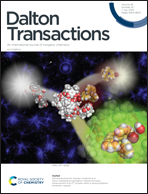A multifunctional Ni-doped iron pyrite/reduced graphene oxide composite as an efficient counter electrode for DSSCs and as a non-enzymatic hydrogen peroxide electrochemical sensor†
Abstract
Nickel-doped FeS2/rGO composites were synthesized as multifunctional materials via a facile hydrothermal method. The synthesized materials were characterized with XRD, FESEM, XPS, and TEM-SAED for structural, morphological and chemical studies. To study their electrochemical properties, all the synthesized composites were subjected to cyclic voltammetry tests. The optimum composite revealed high catalytic activity with high peak current density, limiting current, and efficiency of 7.60% for DSSC, which surpassed that of a platinum-based counter electrode (6.69%). The efficiency of the DSSC was significantly supported by interfacial studies and electron lifetime studies, and it exhibited lower charge transfer resistance and higher electron lifetime, respectively. Moreover, the fabricated DSSCs with high efficiency were subjected to transient photo-response studies and showed a stable current response with multiple photo-ON and OFF cycles for a period of 600 s. To broaden the application of the synthesized material, it was used as an electrochemical sensor for the efficient sensing of hydrogen peroxide (H2O2). The sensing electrode was modified with the optimum Ni-doped FeS2/rGO composite, and voltammetric detection was carried out in the hydrogen peroxide concentration range of 4–100 μM. Thus, the synthesized material can be applied in DSSCs and as an electrochemical H2O2 sensor.



 Please wait while we load your content...
Please wait while we load your content...